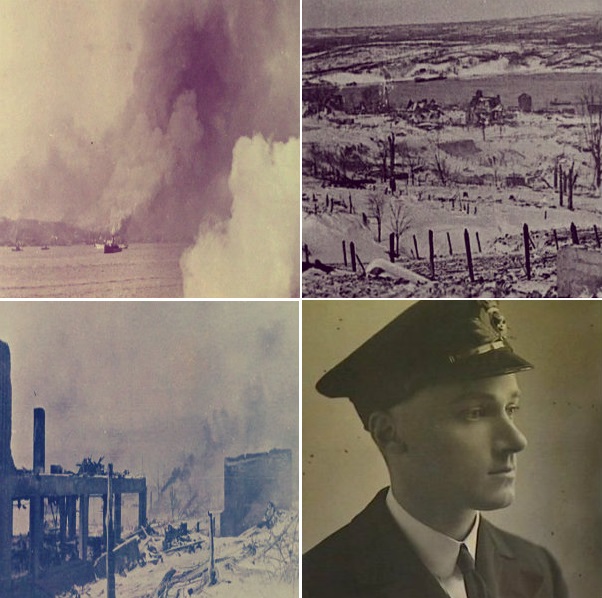Previously unseen pictures of the WWI explosion in Halifax, then the world’s biggest explosion, were recently revealed and released.
The said photos were taken by a Somerset sailor named Victor Magnus who was on watch at the shoreline at the time the WWI catastrophic blast in Halifax, Canada happened. The meltdown resulted in the death of about 2,000 individuals. Furthermore, the Halifax explosion, which occurred on a Thursday, the 6th of December year 1917, almost obliterated an entire town.
The Greatest Explosion Made By Man in That Time
It was on December 6, 1917, at exactly 09:04 [Greenwich Mean Time], when two ships, both involved in the Great War efforts, collided causing that time’s greatest man-made explosion throughout the world — the Halifax catastrophe.
SS Mont Blanc, French ship, collided with the SS Imo, a Norwegian vessel. The former was carrying a large amount of explosives resulting to the cataclysmic explosion. Described as a “floating bomb”, the French vessel was loaded with 2,000 tons of picric acid, 200 tons of TNT, 56 tons of gun cotton and 223 tons of motor fuel — quite a dreadful cargo. Reports after the disastrous accident stated that SS Mont Blanc was blown out in just seconds after catching fire.
All in all, 1.5 sq miles of Halifax was flattened during the explosion. What’s more, over 1,900 people died because of it. Fortunately, Mr. Magnus wasn’t one of the casualties. An ardent photographer, he was able to take photos of the plumes of smoke which rose up after the blast as well as pictures of the fragmented town littered with ashes.
Mr. Magnus went on to have three children after WWI ended. It was Anne Foreman, his daugther, who made the decision to share the photos taken by her father during that great blow-up in Halifax in commemoration of the centenary of the outbreak of the Great War.
Now 89, Ms. Foreman said that the pictures, more than relaying a part of war history, bring back memories of the tender and beautiful man she fondly calls her father.
Ms. Foreman will be taking the pictures in London’s Imperial War Museum.
